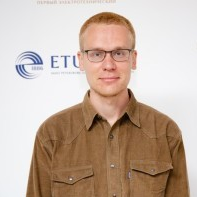Electromagnetics
A special issue of Magnetochemistry (ISSN 2312-7481).
Deadline for manuscript submissions: closed (31 August 2020) | Viewed by 2543
Special Issue Editors
Interests: magnetic composites; radio-wave absorbing materials; electromagnetic measurements; sol–gel; nanomaterials; theranostics; superparamagnetism; magnetic nanoparticles; biomineralization; magnetosomes; continuous flow synthesis
Special Issues, Collections and Topics in MDPI journals
Interests: magnetic and magnetotransport properties; memrisitive nanocomposites; metamagnetic alloys; magnetostructural transition; charge and spin transport phenomena; chiral nanostructures; exchange interaction in nanostructures; novel multifunctional magnetic materials; magnetic order induced in nonmagnetic solids
Interests: physical–chemical processes of solid-state synthesis; oxide materials; non-agglomerated metal nanoparticles and oxides; nanomagnetism of ferrite particles; new ceramic materials; functional nanocomposite materials; reaction and mutual diffusion; materials for SHF radiation absorption; materials for electronics in chip form
Special Issue Information
Dear Colleagues,
This Special Issue is devoted to the study of the interaction of electromagnetic radiation with materials containing ferro- and ferrimagnets and the use of these materials for the purpose of protection from exposure to electromagnetic radiation of the radio frequency range. Research and development in this area require solving problems related to understanding the physical mechanisms of the interaction of magnets with radio frequency radiation, the technology of composite materials containing ferro- and ferrimagnets, methods for measuring the transmission and reflection coefficients of electromagnetic waves with these materials, and analyzing the structure and chemical composition of the studied samples. The choice of topics is due, inter alia, to the problem of the growing level of electromagnetic pollution of residential areas, which requires the development and creation of new low-cost radio-absorbing materials, as well as the need for a correct assessment of the functional characteristics of the materials being created. Thus, the following main topics are proposed as part of this Special Issue:
1. Physical effects of the interaction of electromagnetic radiation of the radio frequency range with magnetic composites.2. Chemical technology for the creation of radio-absorbing materials based on ferro- and ferrimagnets, including the following:
- Sol–gel synthesis;
- Solvothermal synthesis;
- Chemical coprecipitation;
- Polymer technology;
- Low-temperature ceramic technology;
- Other synthesis methods.
- Coaxial transmission line method;
- Coplanar waveguide method;
- Transmission line method with horn antennas;
- Rectangular waveguide method;
- Resonator method;
- Watt-metric method;
- Other measurement methods.
- X-ray diffraction
- Electron diffraction;
- Neutron diffraction;
- Mössbauer spectroscopy;
- Magnetic granulometry;
- Electron microscopy;
- Scanning probe microscopy;
- Other methods of analysis of structure and composition.
- Modeling by numerical methods;
- Mathematical modeling using theoretical models.
Dr. Kamil Gareev
Prof. Dr. Erkki Lähderanta
Prof. Dr. Vladimir Pankov
Guest Editors
Manuscript Submission Information
Manuscripts should be submitted online at www.mdpi.com by registering and logging in to this website. Once you are registered, click here to go to the submission form. Manuscripts can be submitted until the deadline. All submissions that pass pre-check are peer-reviewed. Accepted papers will be published continuously in the journal (as soon as accepted) and will be listed together on the special issue website. Research articles, review articles as well as short communications are invited. For planned papers, a title and short abstract (about 100 words) can be sent to the Editorial Office for announcement on this website.
Submitted manuscripts should not have been published previously, nor be under consideration for publication elsewhere (except conference proceedings papers). All manuscripts are thoroughly refereed through a single-blind peer-review process. A guide for authors and other relevant information for submission of manuscripts is available on the Instructions for Authors page. Magnetochemistry is an international peer-reviewed open access monthly journal published by MDPI.
Please visit the Instructions for Authors page before submitting a manuscript. The Article Processing Charge (APC) for publication in this open access journal is 2700 CHF (Swiss Francs). Submitted papers should be well formatted and use good English. Authors may use MDPI's English editing service prior to publication or during author revisions.
Keywords
- magnetic composites
- radio-wave-absorbing materials
- electromagnetic measurements
- soft chemistry
- chemical technology
- structure and chemical composition
- theoretical modeling







